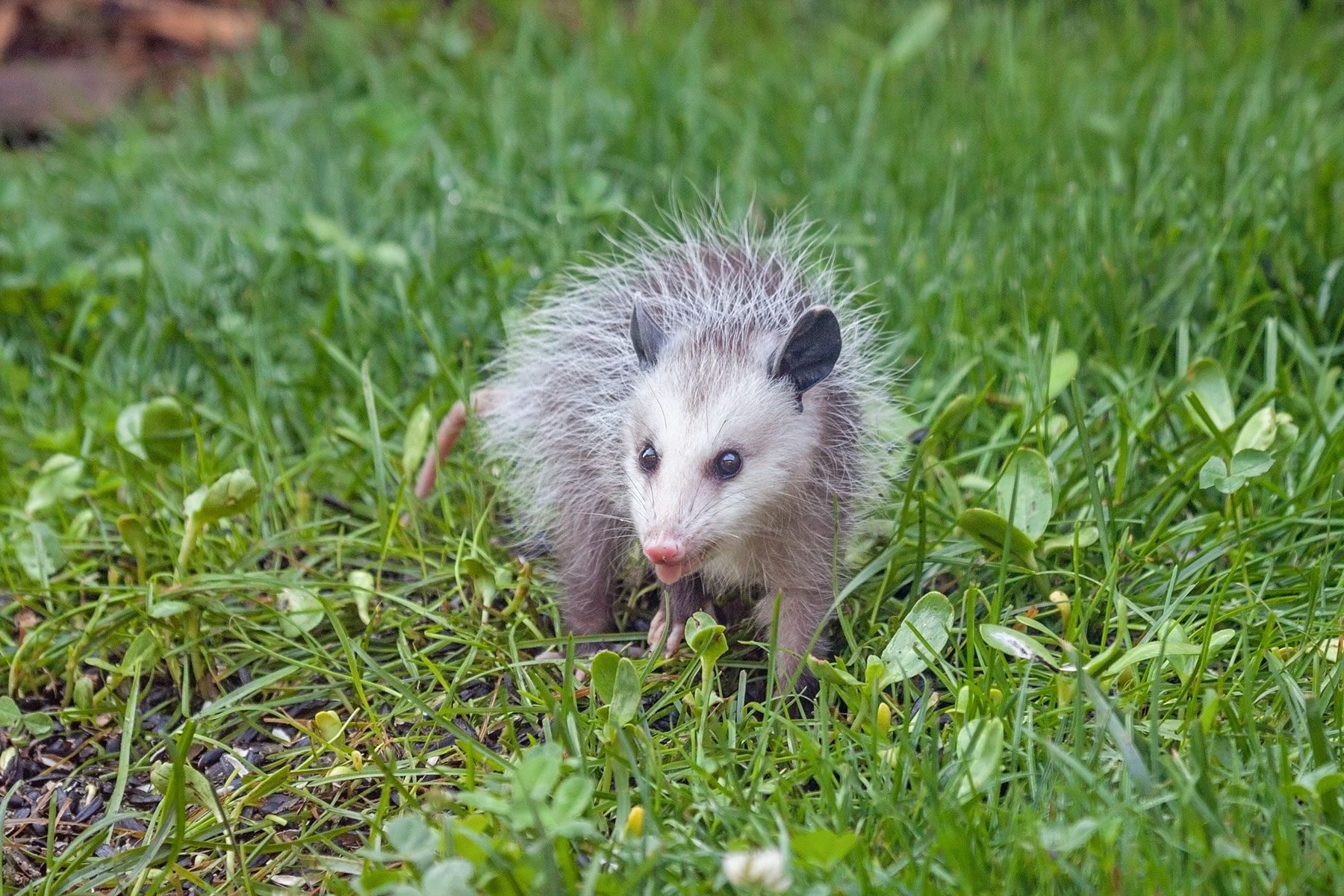Opossums are helpful visitors for our yards and gardens. Here are some tips for enticing them into your life, plus some common myths debunked.

How Opossums Help Your Yard and Your Health

I grew up in a place that doesn’t have opossums. So when I finally saw one in my 30s, it was a real treat — a treat that kept on giving, as it turned out, because he started living under my house.
At first, the strange noises coming from below the floorboards at night were a little disconcerting, but we soon learned to live in harmony. I also learned how helpful my goofy-looking neighbor was to the garden.
“They’re really neat animals, which get a really bad rap,” says David Mizejewski, a naturalist with the National Wildlife Federation. “A lot of it is based on their appearance and nothing more than that. So I’m always trying to sing the praises of opossums and get people to see them in a new light, like ugly is the new cute.”
On This Page
What Is An Opossum?
Virginia opossums are the only marsupial species in the U.S. “Their little babies live in the mother’s pouch until they get big enough, and then they ride on her back,” says Mizejewski. “It’s super cute if you’re lucky enough to spot that.”
Opossums also have more teeth than any other North American mammal; back feet with an opposable digit; and a tail that can grab objects (known as a prehensile tail). Plus, they’re one of the few mammal species that don’t get rabies and distemper.
Where Do Opossums Live?
Opossums live in much of the U.S. in woodland areas, marshes, farmlands, suburbs and cities. They don’t live where it’s overly cold or dry, like most of the Intermountain West. That’s probably because their fur-less tails and ears are prone to frostbite, which can be deadly.
“Unlike most other wildlife species, opossums have learned not only to survive all of the massive environmental change that we humans have wrought, they have been able to take advantage of those changes and actually expand their range,” says Mizejewski.
Opossum Benefits
In our yards, opossums:
- Provide natural pest control by eating insects, small rodents and snails;
- Inhibit the spread of disease, because they don’t contract any from other neighborhood-dwelling species like raccoons and skunks.
As a mid-level predator, they also play important roles in the greater ecosystem, including:
- Keeping populations of smaller animals like mice and rats in check;
- Providing food for larger predators, like great-horned owls and foxes;
- Cleaning up animal carcasses and roadkill;
- Disbursing seeds by eating berries, then pooping out the seeds elsewhere.
Opossums Misconceptions
Often people dislike opossums because they think they’re dirty and spread disease. “None of those things are true,” says Mizejewski. “They’re actually very fastidious groomers. Think of your cat grooming itself.”
It’s also rare for an opossum to hurt a dog, cat or child. Opossums don’t generally attack animals bigger than a rat. And while it’s possible for them to fight if cornered, their first line of defense is actually to go catatonic, or “play possum.”
“If they feel like their life is in danger, they literally will keel over,” says Mizejewski. “They also emit a really stinky musk that makes them disgusting smelling, and all of that confuses predators.”
Still, if one gets into your house, it’s safer to call a wildlife removal expert instead of trying to trap it yourself.
Do Opossums Eat Ticks?
Yes, but not in large numbers. Being omnivorous opportunists, their diet also includes other invertebrates, from insects to snails and slugs. They’ll also eat small rodents, frogs, birds, fruit and berries, garbage, bird seed, pet food and roadkill.
“The opossum diet changes slightly depending on the season,” says Meg Pearson, training manager at Critter Control. “For example, they eat a lot of insects in the summer, while they mostly consume small mammals in the winter.”
Possums vs. Opossums
While we often use the term interchangeably, opossums and possums are actually different animals. Opossums are found in the Americas, whereas possums live in Australia and New Zealand. Both are marsupials, which first evolved in North America until continental drift separated and isolated them.
How to Attract Opossums to Your Yard
The same native plants you put in your yard to attract birds and pollinators will probably attract opossums as well. Opossums particularly like fruit and berry-producing trees and shrubs, like blueberries, choke berries and wild strawberries. All are also great for birds and bees.
Providing water, like a birdbath on the ground, can also attract opossums. If you want to get them to move in permanently, build a brush pile or plant a dense plot of evergreens with an understory of shrubs and other plants like ferns and wildflowers. Opossums are particularly fond of denning in tree cavities and abandoned animal burrows.
“So if you have big trees on your property, try to protect and preserve them, especially if they have hollows and cavities in them,” says Mizejewski. “Those are really important wildlife habitat not just for opossums, but for birds and lots of other animals.”
Opossums Drawbacks
Once in a while, opossums can become pesky and damage property.
“Opossums are opportunists and will take advantage of any area that they deem suitable for shelter,” says Pearson. “Often times they take up residence in unoccupied attics, garages, sheds, or beneath porches. They will also steal eggs from chicken coops and make a mess rummaging in garbage cans and eating left out pet food.”
Most problems are easily solvable, Mizejewski says. Don’t feed pets outside (that also attracts rodents). Put a bungee cord on the trash can lid. And stay on top of house maintenance, including adding wire screening to block off access points.
But, if you have horses, do not encourage opossums into your yard, as they carry a pathogen in their droppings that in rare cases can case neurological disease in horses.




















